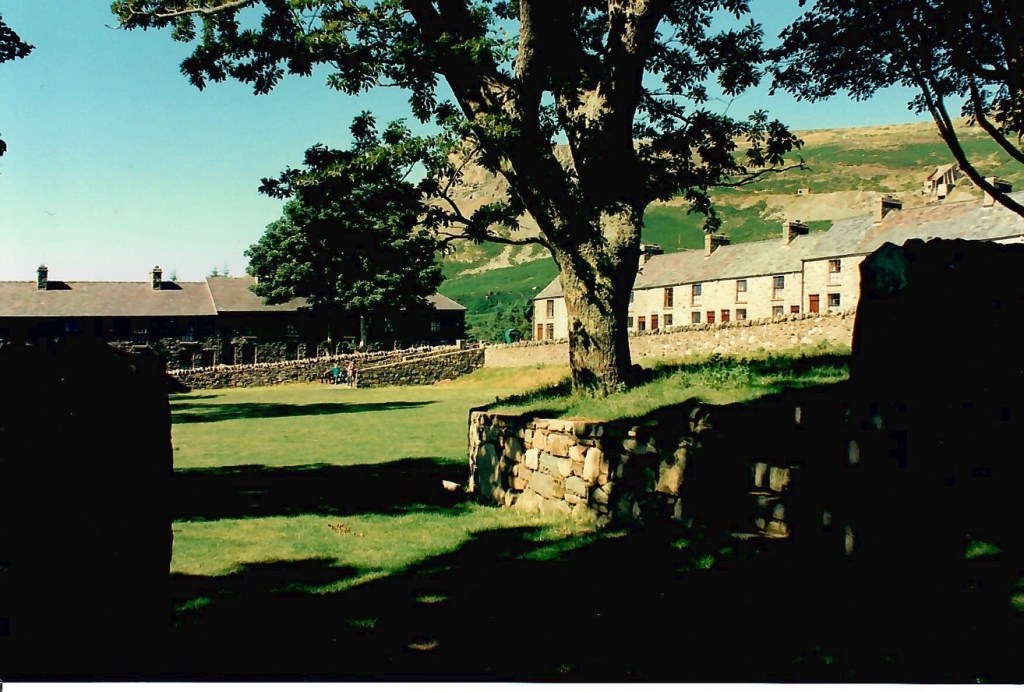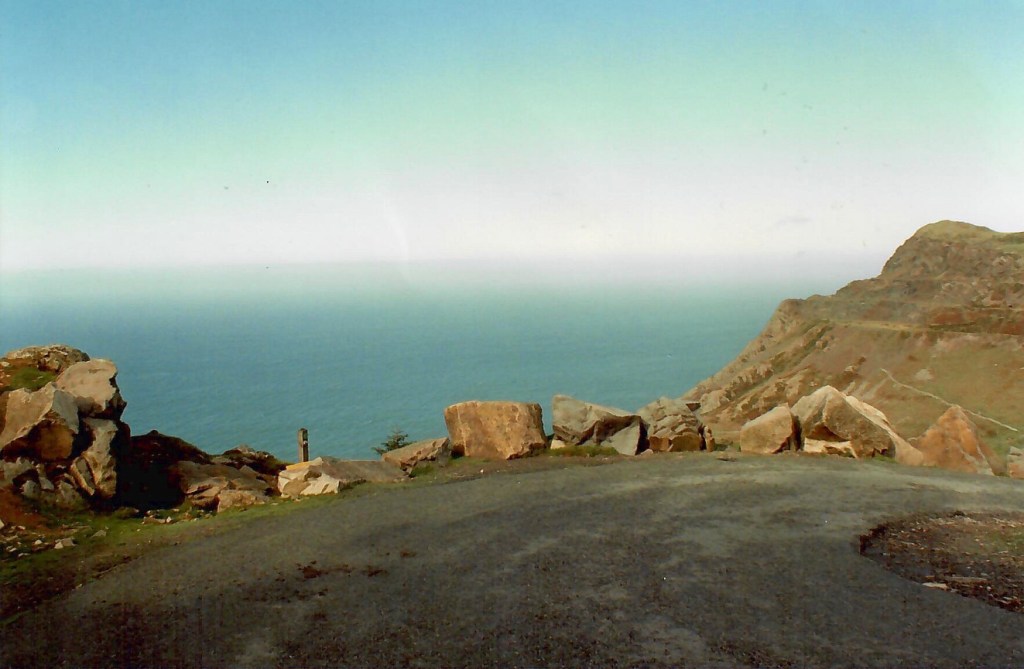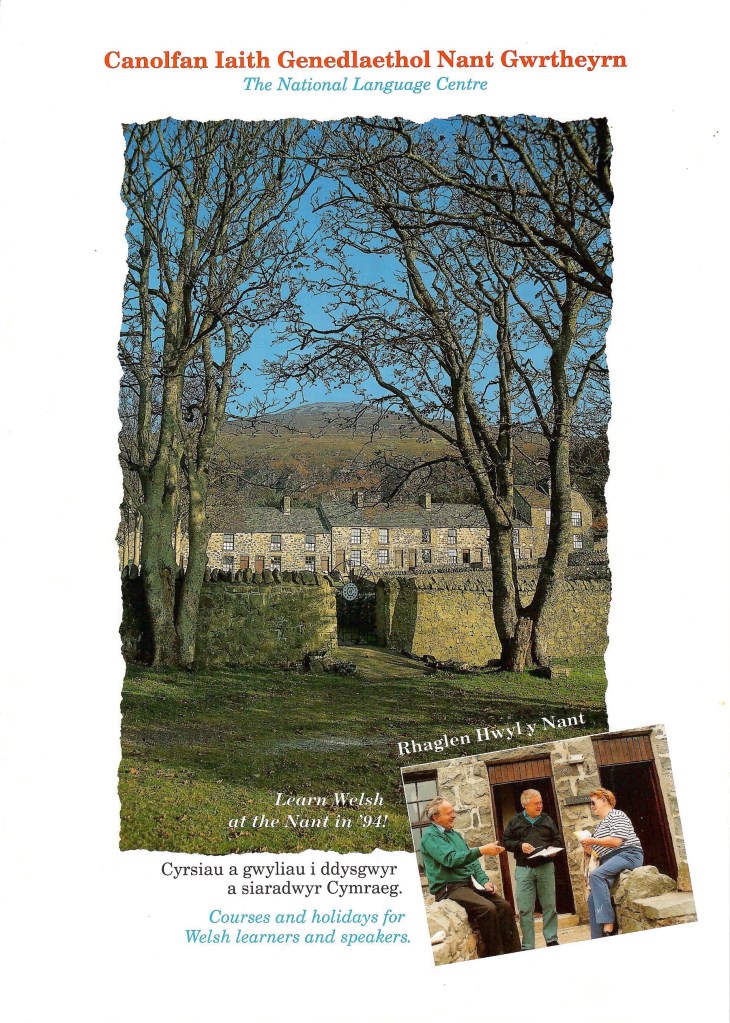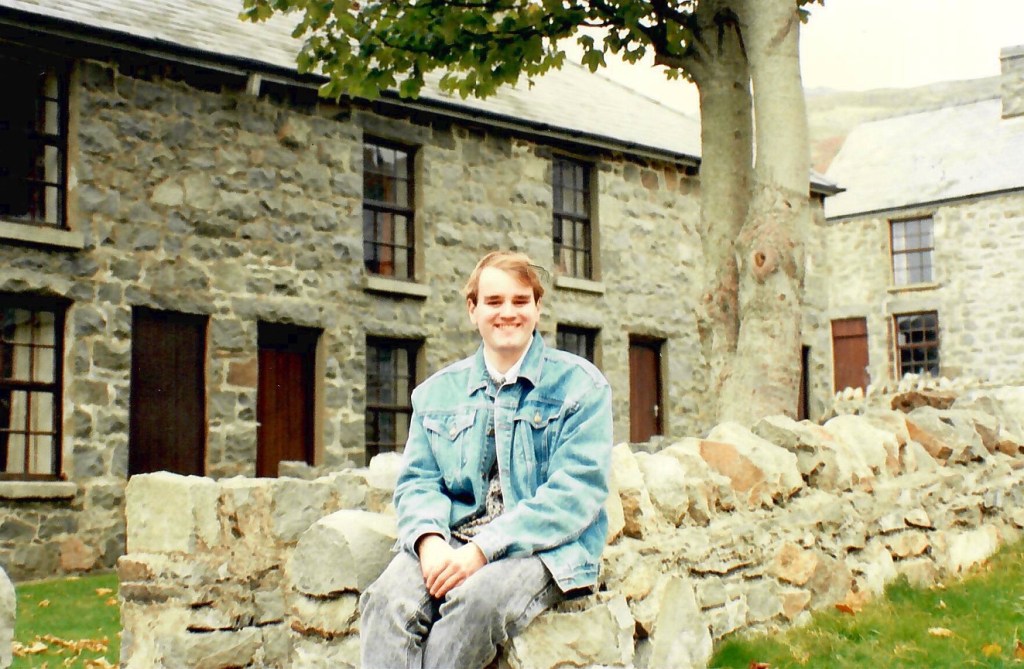Thirty years ago this week, I sat down in a classroom in an abandoned quarrying village to learn the Welsh language. I couldn’t have chosen a more idyllic spot: the National Language Centre, Canolfan yr Iaith Genedlaethol at Nant Gwrtheyrn on the Llŷn peninsula in North Wales.


My journey to the Nant was a long one, literally and metaphorically. When I went to Cardiff High School in 1975, I gave up Welsh in favour of Latin. I didn’t enjoy Welsh at Lakeside primary school, and was not a fan of the teacher, who rightly gave me B- in my final report, yet described my work as very good. I regretted the decision immediately. Welsh teaching at Cardiff High was in a different league, and I’d have learned my national language far more quickly. But life is about making up for regrets rather than mourning them for ever.
I was living in Gloucestershire (Swydd Gaerloyw in Welsh) in May 1994, and found the long drive to Llŷn magical. I smiled at the name Woofferton as I drove through that village near Ludlow. Much later, long after crossing the border, I fell in love with the spectacular scenery as the A470 road carved its way from Mallwyd through Dinas Mawddwy before sweeping down to the handsome town of Dolgellau. I would come to know this route very well in the years to come.

The final stage of the route to the Nant was sublime, crossing Llŷn with constant views of the mountains of Eryri (Snowdonia) and the whole of Llŷn before me, with the Irish sea cwtching the peninsula. After passing through the village of Llithfaen, I was soon navigating the twisting lane down the hillside to the Nant, with the hills called Yr Eifl dominating the view. As you can see, the descent is not for the faint hearted. Since my visits the road has been improved and coaches can now visit the site.

On the evening of Sunday 1 May 1994 I settled in to my cottage (I was sharing with another learner) when I was shocked to hear that racing driver Ayrton Senna had been killed at the San Marino grand prix. It is curious how many big new stories broke while I was at the Nant in 1994: later that week the Conservatives suffered a stunning by election defeat at Newbury to the Liberal Democrats, while on a later stay in September I heard about the Estonia ferry disaster and a plague outbreak in India. Even tragic news sounds more lyrical in Welsh.

We started lessons on Monday morning, and I loved the experience of learning in this beautiful setting. The language centre was the brainchild of a local doctor, Carl Clowes, who dreamt of turning the abandoned quarrying village, Porth y Nant, into a centre for teaching Welsh. Thanks to his decade-long campaign, I was now learning Cymraeg. Our lessons took place in the old manager’s house, while we took coffee and lunches in Caffi Meinir, overlooking the sea.
Our teacher was Catrin, a native Welsh speaker. It was amusing to contrast her with the head tutor, Meic, who learned Welsh as an adult. There were times when Meic was better able to answer some of our ‘why?’ (‘pam’ in Cymraeg) questions: having learnt from scratch himself, he had a better grasp of some of the quirks of the language than Catrin, who found the act of speaking the language instinctive rather than acquired. But Catrin did a superb job: by the end of the week I was thrilled with my progress, and couldn’t wait to book my next course.


On the last morning, we witnessed a ceremony involving the local mayor. Local schoolchildren performed in Welsh, and Meic proudly introduced his young daughter, who must now be in her thirties.
Hanes y Nant – a brief history lesson
Wales is a land of legends, and Nant Gwrtheyrn is the setting for one of the most tragic tales. According to the story, Rhys and Meinir grew up here as childhood friends who fell in love. Following Welsh tradition, on their wedding day Meinir ran and hid, waiting for her husband-to-be to find her. But he couldn’t find her anywhere, until on a stormy night he took shelter under their favourite oak tree. Suddenly lightning struck and split the tree in half, revealing a skeleton wearing a wedding dress. The cafe – caffi – at the Nant is named after the unfortunate Meinir.


More prosaically, the roads of Liverpool and other fast expanding English cities were paved with stone setts from Nant Gwrtheyrn. This lonely spot between the mountains and the sea was a hive of industry, with over 200 people living in the two rows of terraced houses, and a chapel – Capel Seilo – and school attending to their spiritual and educational needs. Ships moored here to take the stone to England. But after the Great War demand for road stone collapsed, and the last quarry closing in 1939. The village was abandoned after the last family left the Nant 20 years later. That would have been the end of the story, but for the vision of Carl Clowes.

I once described Nant Gwrtheyrn as my spiritual home. I found deep personal satisfaction learning our ancient language in this extraordinary place, making up for my schoolboy folly in choosing Latin over Cymraeg. The 1990s were a time of dramatic change in Wales, as the campaign for home rule – a senedd, or parliament, for Wales – gathered pace, finally bearing fruit in 1999. But the old Welsh ban on pubs opening on Sundays still applied in this corner of Gwynedd: the pub in Llithfaen was firmly shut as I drove through. Dwyfor finally voted in favour of Sunday opening in 1996, the last area of the country to do so.

My four courses at Nant Gwrtheyrn led me to pass my GCSE in Cymraeg i Oedolion (Welsh for adults) in December 1995, culminating in top grade at A level five years later, thanks to an intensive course at Cardiff University when I was living in the capital. It was one of my proudest moments to receive the A level certificate. Nant Gwrtheyrn and other Welsh language teaching centres will play a key role alongside schools if the Welsh government is to achieve its Cymraeg 2050 target of a million Welsh speakers by 2050.

I’d love to return to brush up my Welsh after I retire in a few years’ time. I can’t wait to take that winding road down to the Nant once again.
